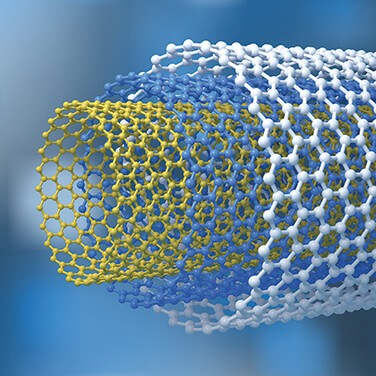Adaptive Fabric Responds to Changes in Body Temperature
By Kevin Ritchart
Researchers at the University of Maryland, College Park, have developed a self-regulating fabric from infrared-sensitive yarn that responds to changes in temperature and humidity.
The Maryland team, led by YuHuang Wang and Ouyang Min, claims to have created the first textile that automatically changes its structure in response to the environment. The textile is made of synthetic fibers with coatings that wick away perspiration thanks to their loose, breathable weaves. Their research was published earlier this year in the journal Science.
A Better Way
Our bodies trap and release heat primarily via infrared radiation. In the winter, we layer textiles to keep heat from escaping, then switch to more breathable fabrics in warmer conditions to allow heat to get away from our skin.
The development of a single garment that would adapt to both ends of the temperature spectrum would be more practical — and hopefully more comfortable — than the current approach.
Despite recent advances in moisture-wicking technology, the development of a single, dynamic fabric that can shed infrared energy when the wearer is hot and retain it when the wearer is cold has remained elusive until the Maryland team’s recent work.
“Our breakthrough is creating a dynamic effect for getting heat away from the body,” Wang said. “The fabric responds to your personal needs.”
“Our breakthrough is creating a dynamic effect for getting heat away from the body.”
How It Works
The new fabric’s enhanced responsiveness comes from its coating. The polymer fibers are covered in a thin layer of carbon nanotubes. When the wearer is subjected to hot conditions, the carbon layer tightens, drawing the strands closer together and creating gaps in the fabric. The result is a more breathable construction that allows heat to escape and lets the wearer cool down. Conversely, if the environment surrounding the wearer becomes cooler, the fibers expand to help capture heat.
Researchers have reported that the new, adaptive textile fabric has altered heat radiation by over 35 percent.
“Now you can have one base-layer garment that can keep you comfortable in a wider range of temperatures and a wider range of activities,” Wang said.
Other Attempts
Apparel brands that specialize in sports and other forms of outdoor recreation have been trying to develop textiles that regulate body temperature for a long time. Most of these materials accomplish this in two ways: increased breathability to let heat escape and quickly pulling moisture away from the body after periods of intense physical activity.
Textile manufacturers, including Schoeller Textil of Switzerland, are among the companies that are trying to develop garments with cooling effects built into the yarn, knit construction, and coating.
“People are more active than they have ever been. Having clothing that allows them to take off an outer garment and not be completely wet is a big advantage,” said Stephen Kerns, North American president of Schoeller Textil.
“The fabric responds to your personal needs.”
Large-Scale Production
While Schoeller was not involved in the University of Maryland team’s research, Wang said experts from other companies (including Milliken and Under Armour) did contribute to their work along with chemists, physicists, and experts from other scientific disciplines.
Taking this technology from the lab to the racks at your favorite sporting goods retailers could prove to be more difficult. More testing is needed, but Wang is hopeful that large-scale production could be feasible later this year.
The new textile can be dyed, knitted, and washed with the methods currently used to produce other performance fabrics, and estimates indicate that the cost of production will be comparable to existing garments.

Read More from Lab Reporter Issue 2, 2019
- Adaptive Fabric Responds to Changes in Body Temperature
- Brain Metabolism Study Reveals Age Differences Between Sexes
- Chemical Accelerators: The Glove-Related Allergen of the 21st Century
- Ductless Fume Hood Safety
- How to Choose the Right Desiccator
- How to Guard Against Cleanroom Contamination
- Microplastics: Investigating Risk and Understanding Evidence
- Protecting n-Butyllithium from Air and Moisture
- Reduce Strain with Ergonomically Certified Gloves
- Safety Compliance: A Team Effort at Texas A&M
- Save Incubator Space with Round Multilayer Devices
- Second HIV Patient in Remission After Stem Cell Transplant
- Solvent Exposure Can Lead to Hearing Loss
- TCI: Innovating to Improve Lab Safety